The decolonized forehead of Radhakrishnan is the signature of a civilization. He lives in his tiled roof home at the Astandra Naicker Veedhi in Singanallur, Coimbatore. He had pulled in his ninth standard at the Singanallur Government Boys Higher Secondary School. Radhakrishnan was born to Ramaswamy Naicker and Krishnammal in the sixties of the twentieth century. This bachelor is 55 years old. " My Guru Gopalakrishna Rao guided me for 32 years. He passed away last year at the ripe old age of 97. My Guru chose me and his teachings have made me what I am today. I was deeply inspired by him and his teachings. Therefore his guidance made me stay unmarried. I want to sit down and meditate on Lord Narayana all the time. The Padmasana posture is the most appropriate for the same. I work in order to earn enough and deposit a good amount so that the income from my investments will permit me to concentrate on my prayers and meditation, " smiled Radhakrishnan.
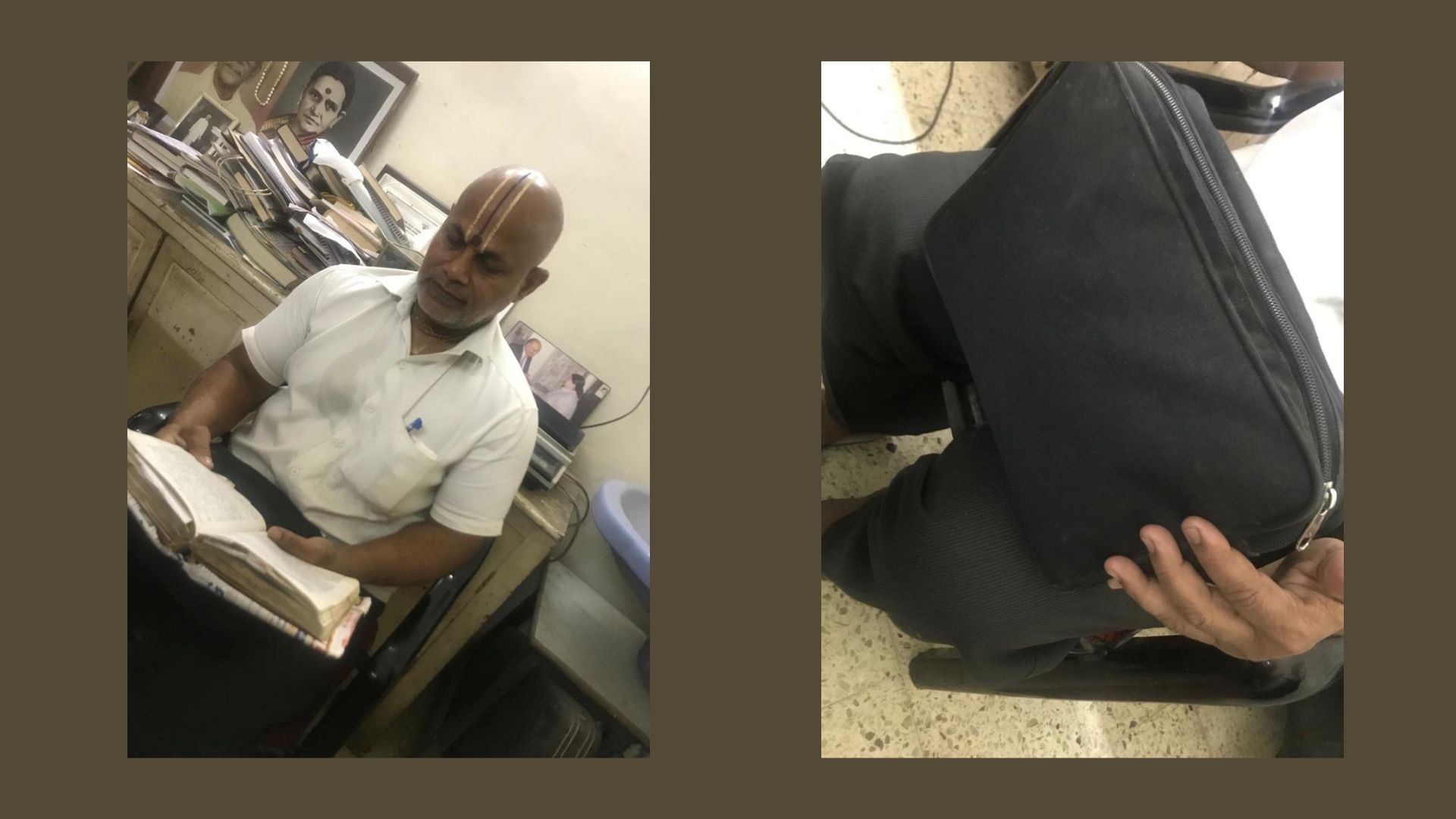
Radhakrishnan works as a ' car driver ' with Kausalya and S.Sethuram of the old Anupappatti family. He had joined his employers many years ago and had initially worked under Rukmini Srinivasan, wife of mill owner A.L.Srinivasan. " Amma used to get up early and recite Sri Vishnu Sahasranamam everyday. She would also recite a number of prayers which included Sri Venkatesa Suprabatam those days. Her devout nature impressed me a lot, " added Radhakrishnan. This devotee of Lord Sriman Narayana was born with three elder sisters and one younger sister. He lives with two of his sisters at his ancestral home.
The car driver sleeps by 8 PM in order to get to 3: 30 AM everyday. He does his dhyanam after the completion of his morning duties. Therefore he hastens to the Codissia grounds for a jog. Yoga is part of his daily schedule. He carries a copy of the Bhagavad Gita with an explanatory note for each verse with him at all times. The Bhagavata ( devotee of Lord Narayana ) reads verses from the Bhagavad Gita during work intervals. He was happy to show his book during his visit to the office of ' The Verandah Club '. Radhakrishnan reads the transliteration in Tamil in order to follow the original verses.
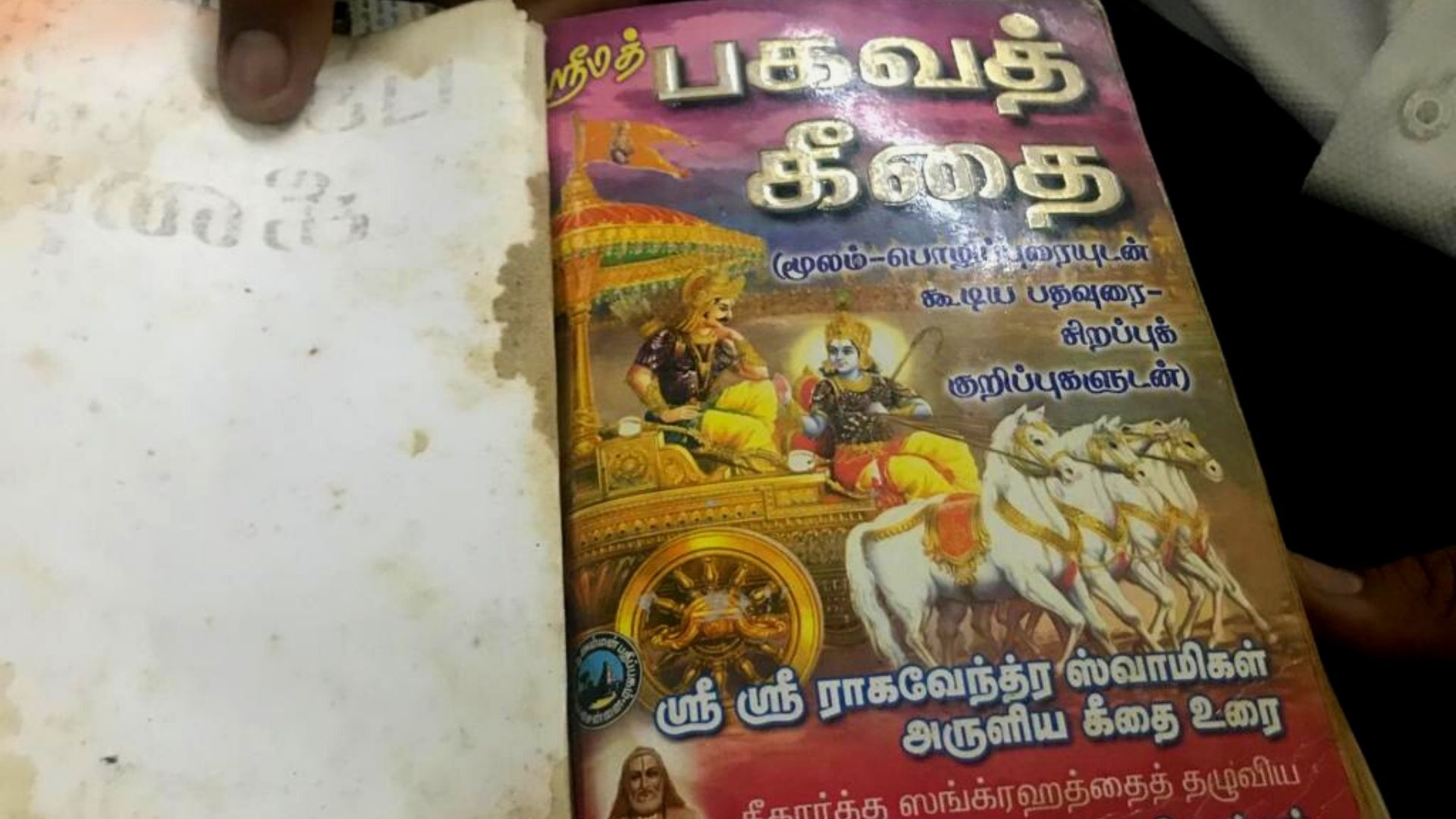
Radhakrishnan used to visit the Anjaneyar Temple in Singanallur along with his uncle. The shrine happens to be the home to the Mruthika Brindavanam of Saint Vadiraja ( 1480 - 1600 AD ). It was in this temple that his uncle would read out verses from the Mahabharatam. Young Radhakrishnan began this way. One day his future Guru Gopalakrishna Rao had seen this happen. He taught the mode of reading the Mahabharatam to the young and aspiring Radhakrishnan. Thereafter Gopalakrishna Rao became the teacher and Radhakrishnan , the student. The teacher was strict. He advised Radhakrishnan to stay a pure vegetarian all his life. The eco-friendly vegetarian way of life happens to be the bedrock of Bharatiya culture.
Guru Gopalakrishna Rao had learnt under the great Dwaita scholar Para Vidya Praveena T.S.Raghavendran of Telugu Brahmin Street Coimbatore. The inclusive approach of India manifested itself in the Guru Gopalakrishna Rao and the instruction was an Amrita Pravaham ( Flow of Nectar ). Gopalakrishna Rao taught Radhakrishnan the basis of Indian philosophy. " My Guru taught me what Adwaita, Visishtadwaita and Dwaita are. I attended many classes and finally understood that Hari was Sarvottama and Vayu was Jeevottama. Guruji taught me the basics of Dvaita philosophy. I learnt about the levels of divine beings ( Thaaratamyam ), he made me understand what a human soul was capable of and through the Pancha Bedha Thaaratamyam I learnt and the five differences - difference between God and man, difference between God and inanimate items, difference between Human beings and inanimate things, difference between one inanimate item and another, difference between one human soul and another human soul. He used to read the texts in Sanskrit and give me an explanation in easy Tamil. I am lucky and do not know how I earned the merit to get such a Guru, " stated the Bhagavata.
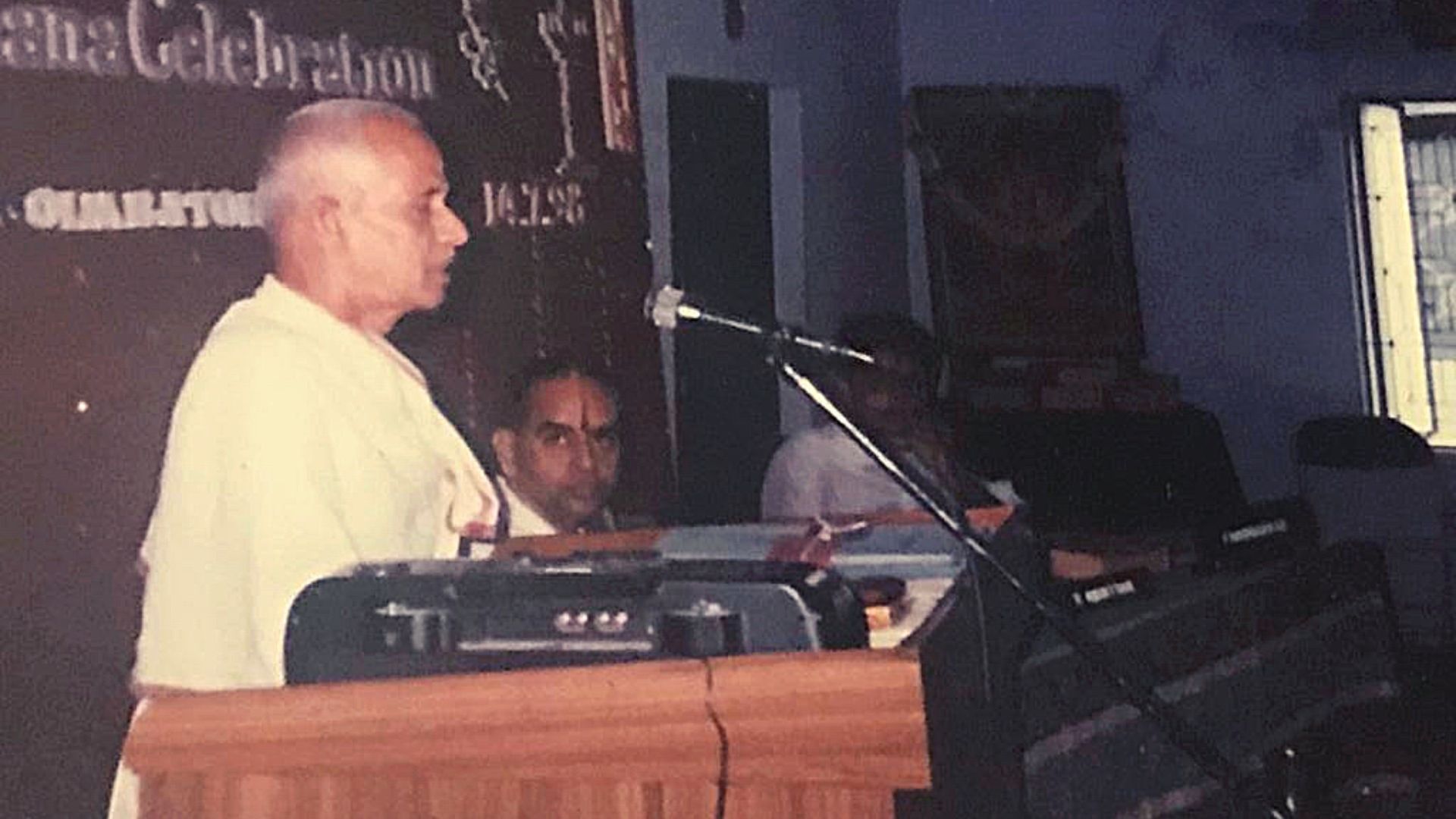
The Guru had taught Radhakrishnan everyday between 6:15 AM and 8: 30 AM. Radhakriahnan sang a few songs on Lord Narayana and rendered a few slokas too. The first one was Kalachakram... wherein Vishnu runs time , Dravyam....5 items that cannot be destroyed and they are Kalam ( time ), Vedham, Sky, Karma and the nature of the soul. Ananya... wherein Lord Narayana asks people to think about him and he is ever ready to grant everything to his devotees. Guru Gopalakrishna Rao had also stated that one should surrender the ego and that the soul was dependent on Lord Narayana. Even Mahalakshmi is dependent on Lord Hari Sarvottama. The fabulous teacher had taught two more people, but Radhakrishnan was the only one to study for 32 years. The car driver quotes from the Bhagavad Gita with ease.
" My Guruji shared a lot of inputs connected with marriage. He told me that we should always pray to Lord Hari even if we are very busy leading the life of a householder. The wife would look after the needs of a husband and the husband should pray to Lord Hari Sarvottama while attending to the family. The couple should together do ' Bhakti '. Guruji was an ocean of knowledge. I recorded his teachings. They were later transferred to a CD and then to my pen drive. Guruji told us that Lord Hari is fond of us but we have not realized it. Lord Hari Narayana states that he is ready to grant Moksha after one shows devotion and affection towards him. Guruji was always ready to answer questions. I was directed to ask him 100 questions even. He would answer the questions with citations from Srimad Bhagavatam and Bhagavad Gita. He told me that Lord Hari Narayana Sarvottama would assist the ones who think of him while passing away. Such a person would be blessed by Lord Narayana. I learnt about the Jada Bharata Charitram from my Guru. The story of Jada Bharata is interesting. Chakravarthi Bharata gave up his kingdom and performed austerities. He developed an attachment to a deer and had thought about her while passing away. He was then born a deer in his next life. He was careful and was reborn as Jada Bharata. The great soul had focus and thought about Lord Hari at all times. One day he had to carry the palanquin of Raja Rahuguna. Events happened and the Raja understood a lot about the noble and devotional nature of Jada Bharata. The great Jada Bharata was ever calm , non reactive and deeply attached to Lord Hari Narayana always. Since Jada Bharata was aware of his earlier births , he had been careful not to fritter away the opportunity to be connected with Lord Hari always. However others thought that he was a fool. He ate whatever was made available by others. The life of Jada Bharata ( Jada means inert ) tells us that we have to think of Lord Krishna all the time and if we think of something else at the time of passing away, our efforts are wasted. Therefore Guruji stated that our fruitful human life must be used to be righteous while thinking of Lord Krishna all the time, " affirmed the Parama Bhagavata who visits Ulagalandha Perumal ( Trivikrama Narayana ) Temple at Singanallur.
A chat with Radhakrishnan is bound to be interesting. The person may be taken to the ancient times. His story demonstrates that a good Guru can really transform the life of a person by putting the individual on the right path. The path is made fruitful with the philosophy transferred from the Master to the student. This has been going on in India for a long time. No wonder Bharat that is India is called the ' Fountain Head of Philosophy.
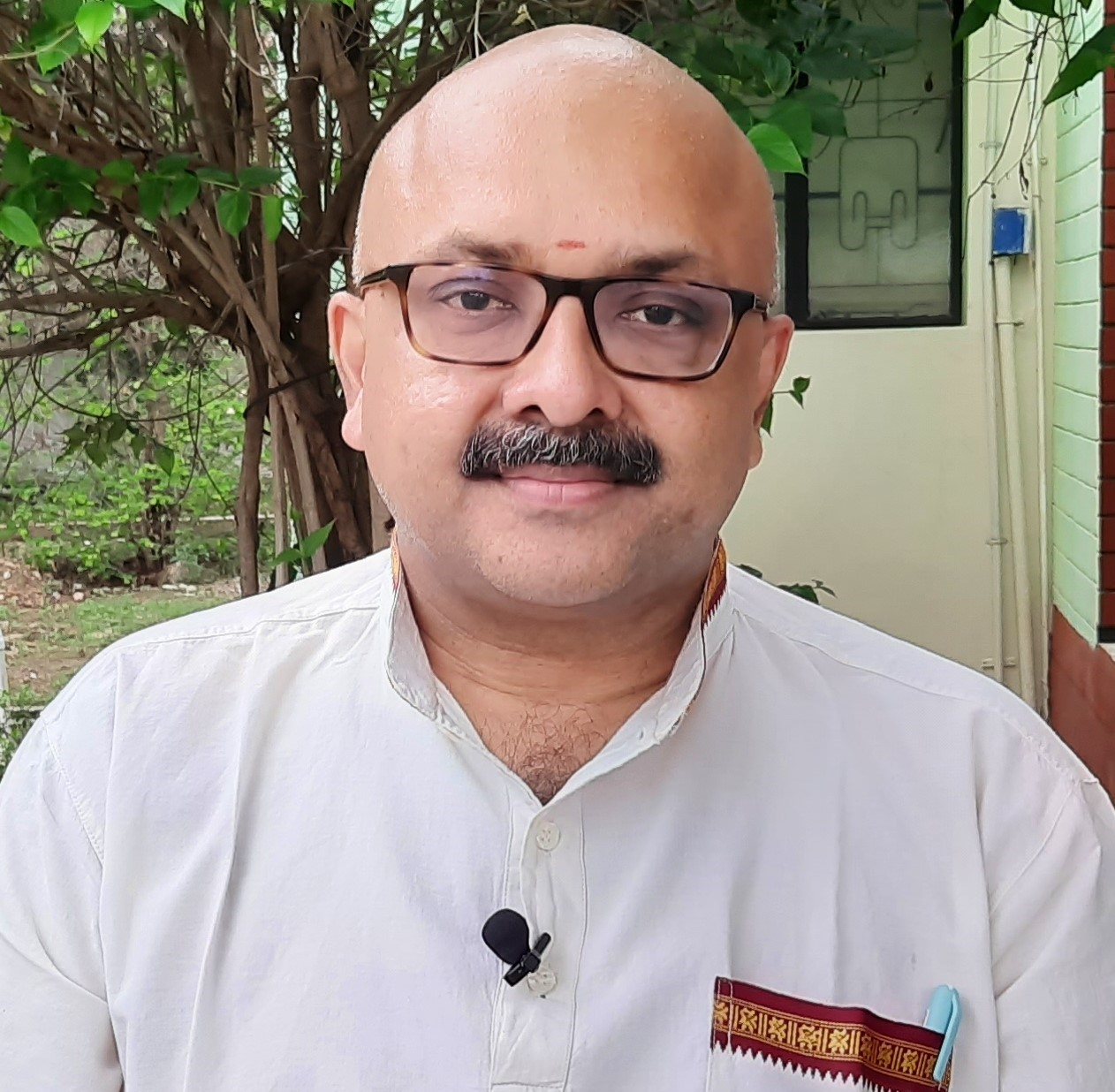 Mr. Rajesh Govindarajulu is one of the founding members of The Verandah Club Pvt. Ltd. He is a leading columnist, historian, jeweler, entrepreneur, and a heritage enthusiast who is earnestly working to revive the past in the light of the present. Experiential learning about the history of Coimbatore is his main course of interest and he is also a panel member of many colleges in the city.
Mr. Rajesh Govindarajulu is one of the founding members of The Verandah Club Pvt. Ltd. He is a leading columnist, historian, jeweler, entrepreneur, and a heritage enthusiast who is earnestly working to revive the past in the light of the present. Experiential learning about the history of Coimbatore is his main course of interest and he is also a panel member of many colleges in the city.
NEXT ARTICLE
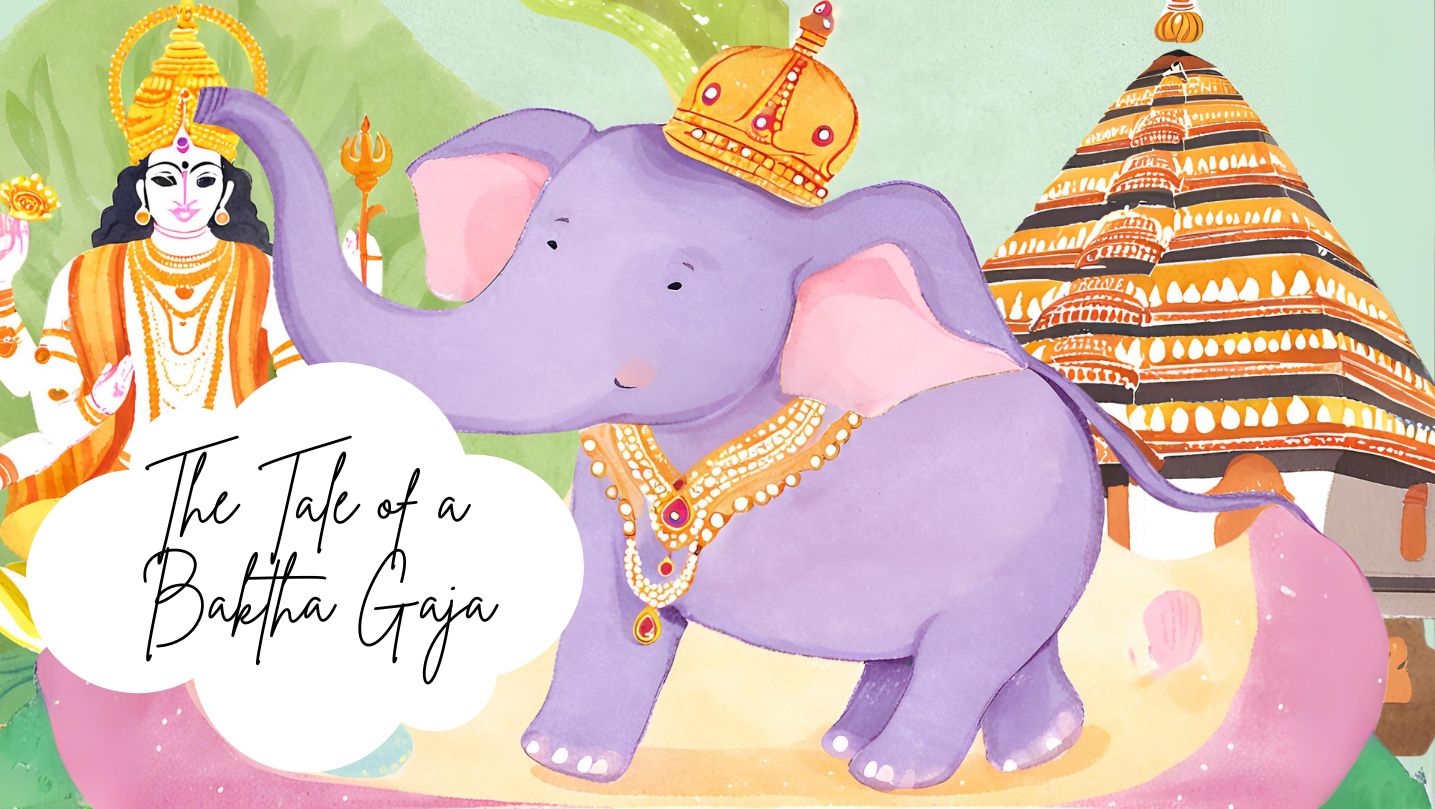
In the lush, green heart of Kerala lived an elephant who became a living legend - a tale of an elephant turned into a bakth. His name was Keshavan, bu...
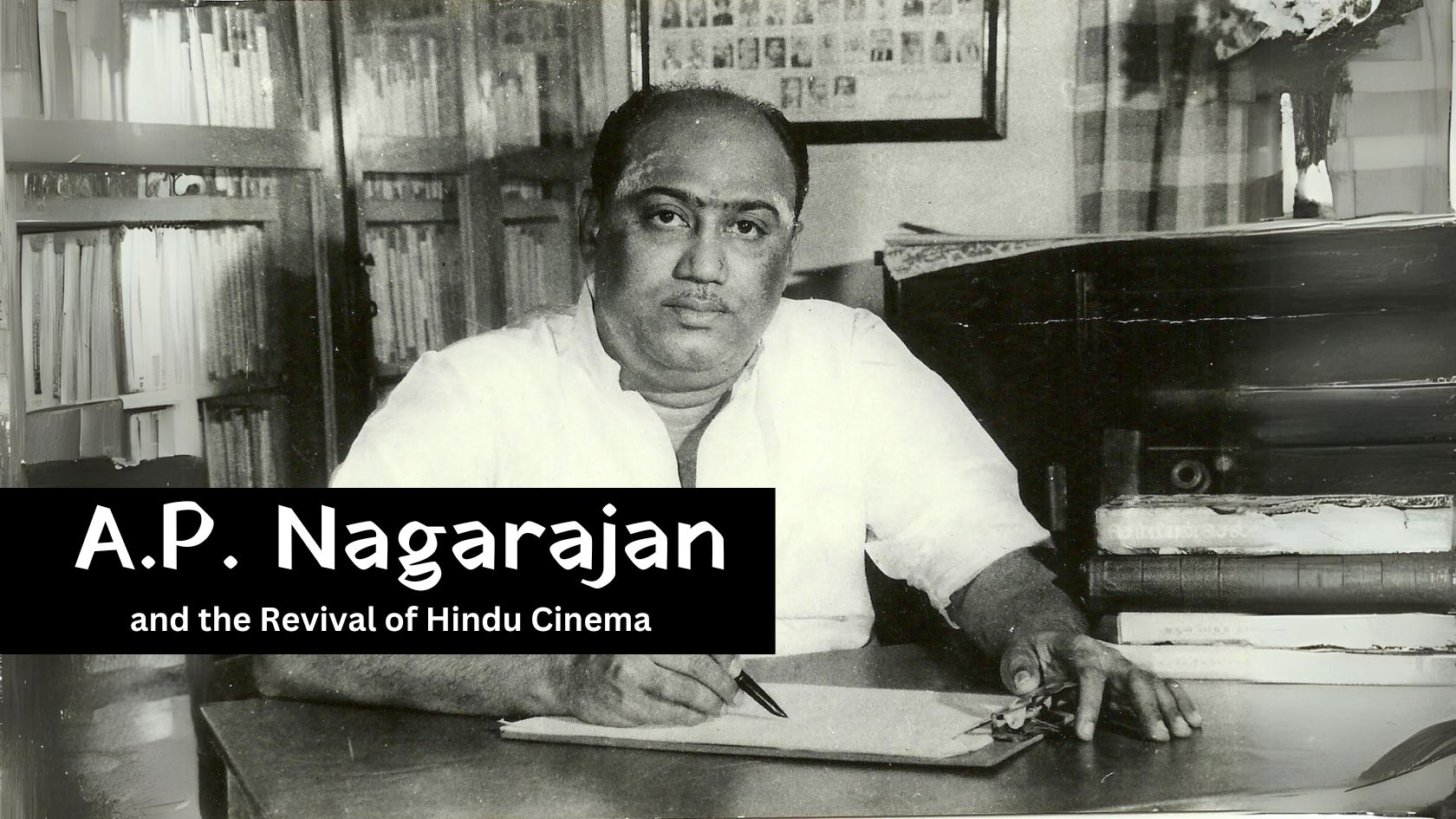
In the early days of cinema, both silent and talkie films thrived on puranas and ithihasas. However, as the years passed, especially by the late 1950s...

Life often presents us with choices that test our resolve, faith, and priorities. Attending the Prana Pratishtha of the Ram Lalla in Ayodhya had alway...